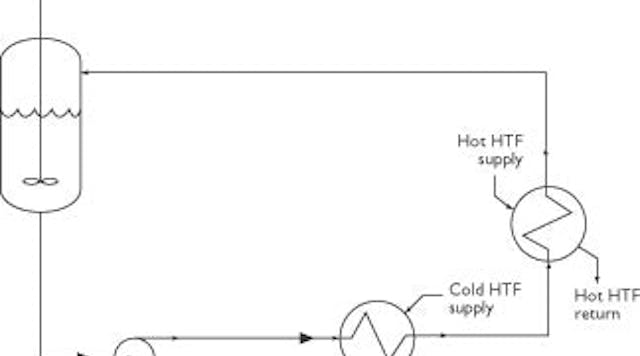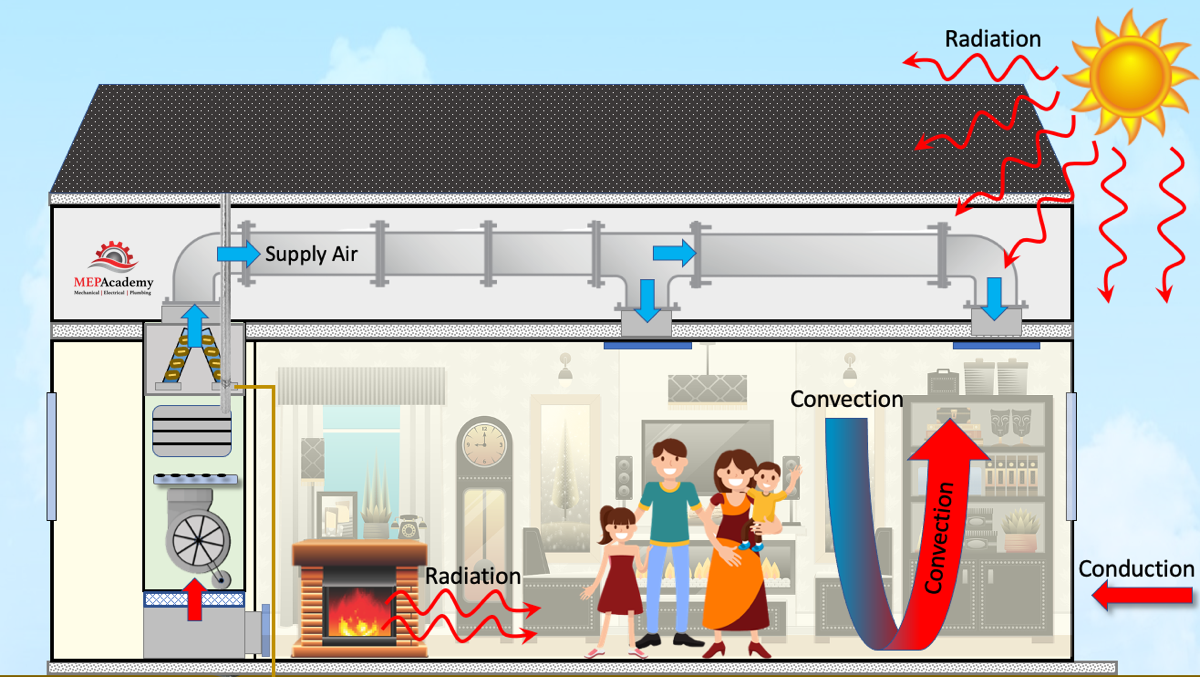A Comprehensive Guide to Selecting the Right Heat Transfer Equipments for Your Requirements
Picking the suitable Heat transfer system is crucial for operational performance. Various systems provide to different needs, affected by aspects such as temperature level variety and liquid type. Understanding the principles behind Heat transfer, such as radiation, conduction, and convection, is important. Furthermore, assessing power sources and upkeep practices can affect long-lasting performance. A closer evaluation of these factors to consider discloses exactly how to customize a system to certain needs. What should one prioritize in this complicated decision-making procedure?
Understanding Heat Transfer: Secret Ideas and Concepts
Heat transfer may seem like a straightforward principle, it incorporates an array of concepts that are essential for reliable system style - DVS Heat Transfer Systems. Understanding these principles is vital for engineers and developers who intend to maximize thermal performance in various applications. Transmission, as an example, entails the transfer of Heat with solid products, while convection refers to the movement of Heat within fluids. Radiation, an additional essential principle, defines just how Heat can be transferred with electromagnetic waves. Each of these devices plays a vital duty in identifying exactly how power relocates within a system. By thoroughly grasping these principles, specialists can make informed decisions, making certain that Heat transfer systems operate successfully and meet the specific demands of their applications
Kinds Of Heat Transfer Equipments: An Overview
Understanding the concepts of Heat transfer lays the groundwork for discovering the numerous kinds of Heat transfer systems readily available. Heat transfer systems can be classified largely into three kinds: convection, radiation, and conduction. Transmission includes Heat transfer through solid materials, counting on straight call in between bits. Convection, on the various other hand, happens in fluids (gases and fluids) where the activity of the liquid itself assists in Heat transfer. Radiation entails the transfer of Heat with electro-magnetic waves and does not call for a tool, permitting it to occur in a vacuum. Each kind of system has unique attributes and applications, making it crucial for people and organizations to very carefully assess their specific demands when selecting the most suitable Heat transfer remedy.
Applications of Heat Transfer Systems in Various Industries
Heat transfer systems play a crucial duty across different markets, affecting efficiency and product high quality. In industrial production procedures, they facilitate specific temperature level control, while in food and beverage handling, they ensure security and conservation. Additionally, HVAC and environment control systems count greatly on efficient Heat transfer to keep comfy settings.
Industrial Production Processes

Many industrial manufacturing processes rely greatly on reliable Heat transfer systems to make best use of productivity and boost item high quality. In industries such as metalworking, Heat exchangers play an important duty in keeping ideal temperature levels throughout welding, casting, and creating. These systems assure uniform Heat circulation, which is vital for achieving wanted material properties. In a similar way, in the chemical manufacturing market, Heat transfer systems assist in exact temperature control during responses, influencing yield and security. Additionally, in fabric production, effective Heat management is essential for coloring and ending up processes, affecting shade consistency and textile top quality. By selecting ideal Heat transfer innovations, makers can improve energy effectiveness and decrease operational prices, eventually leading to a much more competitive and sustainable production environment.
Food and Drink Processing
Reliable Heat transfer systems are similarly essential in the food and drink processing market, where keeping excellent temperature levels is crucial for food safety and security and high quality. These systems play an essential duty in procedures such as sterilization, cooking, and pasteurization, making sure that items are risk-free for intake and preserve their nutritional worth. Heat exchangers, as an example, effectively move Heat between liquids, optimizing energy usage while lessening temperature level fluctuations. Furthermore, refrigeration systems are basic for expanding and maintaining perishable products shelf life. The choice of Heat transfer technology directly affects functional performance and item honesty, making it critical for food and beverage manufacturers to select the ideal systems tailored to their certain processing demands. This mindful option ultimately contributes to consumer contentment and food safety and security.

Cooling And Heating and Climate Control
While numerous sectors depend on Heat transfer systems for efficiency, A/C (Heating, Ventilation, and Air Conditioning) plays an essential role in maintaining indoor environment control across different setups. These systems make use of Heat transfer concepts to regulate temperature, air, and humidity top quality, making sure comfort and security in residential, industrial, and industrial atmospheres. Properly developed cooling and heating systems enhance energy efficiency, minimize operational prices, and lessen ecological impact. In business structures, for circumstances, effective climate control contributes to worker productivity and customer satisfaction. In industrial applications, a/c systems aid maintain optimal problems for devices operation and product conservation. Selecting the best Heat transfer system is important for meeting specific climate control requirements and achieving total system efficiency.
Assessing Energy Sources for Heat Transfer Equipments
In evaluating power sources for Heat transfer systems, a comparison of renewable energy options and nonrenewable fuel source considerations is necessary. Sustainable sources, such as solar and wind, deal lasting options that can decrease environmental influence. Conversely, fossil fuels continue to be common because of their recognized infrastructure and energy thickness, prompting a cautious assessment of both options.
Renewable Power Options

Fossil Gas Considerations
Evaluating fossil fuel considerations is crucial for the performance and sustainability of Heat transfer systems. Nonrenewable fuel sources, such as all-natural gas, oil, and coal, are standard power sources that offer significant Heat result, making them prominent choices for commercial and domestic applications. However, their environmental impact, including greenhouse gas exhausts and resource exhaustion, elevates issues. When choosing a heat transfer system, it is crucial to assess the schedule, cost, and governing elements related to these fuels. Furthermore, the performance of nonrenewable fuel source systems should be taken into consideration, as greater efficiency can minimize some ecological disadvantages. Inevitably, a balanced strategy weighing efficiency and sustainability can direct decision-makers toward the most suitable Heat transfer option for their specific requirements.
Aspects to Take Into Consideration When Selecting a Heat Transfer System
Choosing a suitable Heat transfer system requires cautious factor to consider of various elements that can substantially influence performance and efficiency. One vital element is the operating temperature range, which dictates the materials and style ideal for the application. In addition, the kind of liquid utilized in the system-- whether gas or fluid-- influences Heat transfer efficiency and compatibility. The system's dimension and ability should straighten with the certain demands of the operation to avoid ineffectiveness. Energy source accessibility is also necessary, affecting operating navigate to this website expenses and sustainability. The installment atmosphere, including space restraints and accessibility for maintenance, plays a substantial function in system selection. Finally, regulative conformity and security requirements must be thought about to assure the system satisfies all lawful demands.
Maintenance and Effectiveness Optimization for Heat Transfer Systems
Maintaining Heat transfer systems is necessary for guaranteeing optimal performance and longevity. Normal maintenance tasks, such as cleansing Heat exchangers and inspecting insulation, assistance stop efficiency losses because of fouling and thermal linking. Furthermore, keeping track of system criteria, including pressure and temperature level, enables very early discovery of abnormalities, decreasing downtime and expensive repair work. Carrying out a preventive upkeep schedule can maximize performance and prolong the life-span of parts. Additionally, upgrading to sophisticated control systems can enhance functional effectiveness by getting used to differing conditions and tons. By focusing on upkeep and effectiveness optimization, drivers can accomplish minimized power intake, lower operational costs, and enhanced total system reliability, inevitably leading to much better resource application and a more sustainable operation.
Future Trends in Heat Transfer Technologies
As sectors increasingly focus on sustainability and energy effectiveness, future fads in Heat transfer innovations are established to go through considerable transformations. Developments such as advanced materials, including carbon nanotubes and nanofluids, promise boosted thermal conductivity and efficiency. Additionally, the integration of renewable resource resources into Heat transfer systems is acquiring energy, advertising eco-friendly services. Smart modern technologies, including IoT sensors, are expected to transform surveillance and control, making it possible for real-time data analysis for optimized efficiency. Furthermore, the development of visit this website modular and portable systems will facilitate less complicated installment and upkeep, providing to varied applications. These advancements show a shift towards even more sustainable, efficient, and adaptable Heat transfer remedies, straightening with worldwide energy objectives and environmental standards.
Often Asked Inquiries
What Are the Environmental Influences of Heat Transfer Systems?
The environmental effects of Heat transfer systems can include greenhouse gas exhausts, energy intake, and prospective thermal air pollution. Additionally, inappropriate disposal of inefficiencies and products can contribute to source depletion and environment disruption.
Exactly how Do I Compute the Cost-Effectiveness of a Warm Transfer System?
To determine the cost-effectiveness of a warm transfer system, one need to analyze preliminary prices, operational expenses, maintenance demands, and power performance, comparing these factors against the anticipated life-span and efficiency of the system.
Can Heat Transfer Systems Be Utilized in Residential Setups?
Heat transfer systems can certainly be used in household setups. They offer efficient home heating and cooling down remedies, making homes much more comfortable while potentially reducing power prices. Their flexibility permits numerous applications in household environments.
What Security Laws Put On Heat Transfer Equipments?
Safety and security guidelines for Heat transfer systems generally include standards on installation, upkeep, and procedure. Compliance with local building regulations, manufacturer specifications, and industry requirements is important to assure efficient and risk-free system performance in numerous applications.
Exactly How Do Different Materials Affect Heat Transfer Efficiency?

Transmission, for circumstances, involves the transfer of Heat with strong products, while convection refers to the motion of Heat within fluids. Comprehending the principles of Heat transfer lays the groundwork for exploring the numerous kinds of Heat transfer systems readily available. Heat exchangers, for circumstances, effectively transfer Heat in between liquids, maximizing power usage while lessening temperature level variations. In examining power sources for Heat transfer systems, a comparison of eco-friendly energy options and fossil gas factors to consider is necessary. Steels, useful link such as copper and light weight aluminum, conduct Heat properly, whereas insulators like rubber and glass reduce down Heat flow.